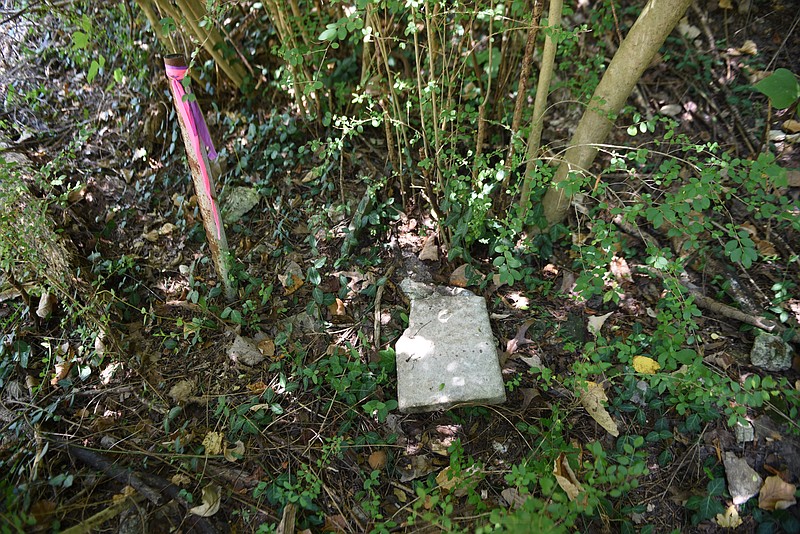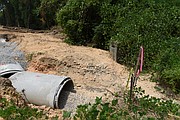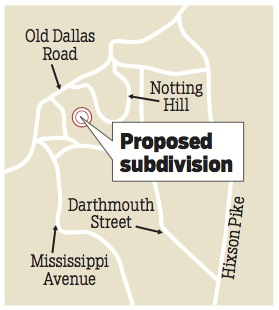A North Chattanooga development has been halted by city officials after contractors uncovered graves that date back to the 1920s.
The developer, RTB Holdings, plans to put up 46 single-family homes on 10 acres north of Dartmouth and Curve streets. And neighbors already have complained that the increased density will add to traffic.
But Gary Hilbert, director of Chattanooga's Land Development Office, said city inspectors stopped work at part of the site after contractors cutting a drainage ditch nearly unearthed the grave of Bellfleet Bowood, who apparently died in July 1920.
Just north of Dartmouth Street, between Curve Street and Knickerbocker Avenue, passersby can see Bowood's grave between two large cinderblock pillars, overgrown with kudzu and covered by debris. At one point, they marked the edge of Beck Knob Cemetery, a cemetery for blacks in Chattanooga from the early 1890s to the 1940s.
According to Hamilton County Genealogical Society records, nearly 90 people were buried on the site, although many did not have markers and the list was based on death records.
Today, only a few overgrown headstones remain in the woods, along with a smattering of sunken graves. Some headstones indicate multiple burials in the same spot.
Hilbert said the city and developers knew there was an old black cemetery in the woods north of Dartmouth Street, but it was inaccurately marked on maps. Hamilton County Geographic Information Systems show a "negro cemetery," but not so close to the street. And Bowood's grave is clearly visible, but it is absent from the genealogical society's grave transcription records.
But now, Hilbert says the developer will have to keep stormwater from further eroding the grave sites and clear up the confusion.
"They need to get their best management practice things in place, so that they don't cause a lot of washing out and having silt run over the neighbors. But they also have to get a certified person out there to locate all the graves," Hilbert said.
One such person is Nicholas Honerkamp, professor of anthropology at the University of Tennessee at Chattanooga.
Honerkamp hasn't been contacted by the city or the developer, but he looked over the site Monday.
He's concerned some unmarked graves already may be disturbed.
"This is a mess. The entire cemetery except for these two stones might have been bulldozed for all we know," Honerkamp said when he first arrived Monday. "I think the property owner needs to really consider what he's going to do with this land. It's a felony to disturb any burials."
But there are options, Honerkamp said.
The developer could contact the state archaeologist's office to start having the graves cataloged so builders could avoid them. Or, after a long process, possibly moved - but that's the expensive option, Honerkamp said.
Paul Teruya, one of the developers, did not return a phone message Monday.
What's most mysterious about this part of the cemetery - and Bowood's grave - is that zoning and building officials didn't know about it.
Neighbor Vicki Reinshagen, who lives across the street from the development, said she's known about the cemetery for all the five years she lived there, but she didn't realize how many burials there actually were.
"I could always see three tombstones when the leaves are gone," she said.
And years before, a local Boy Scout troop built a bridge leading from Dartmouth to the cemetery, but that was later taken down after vandalism was found, Reinshagen said.
Contact staff writer Louie Brogdon at lbrog don@timesfreepress.com, @glbrogdoniv on Twitter or at 423-757-6481.


